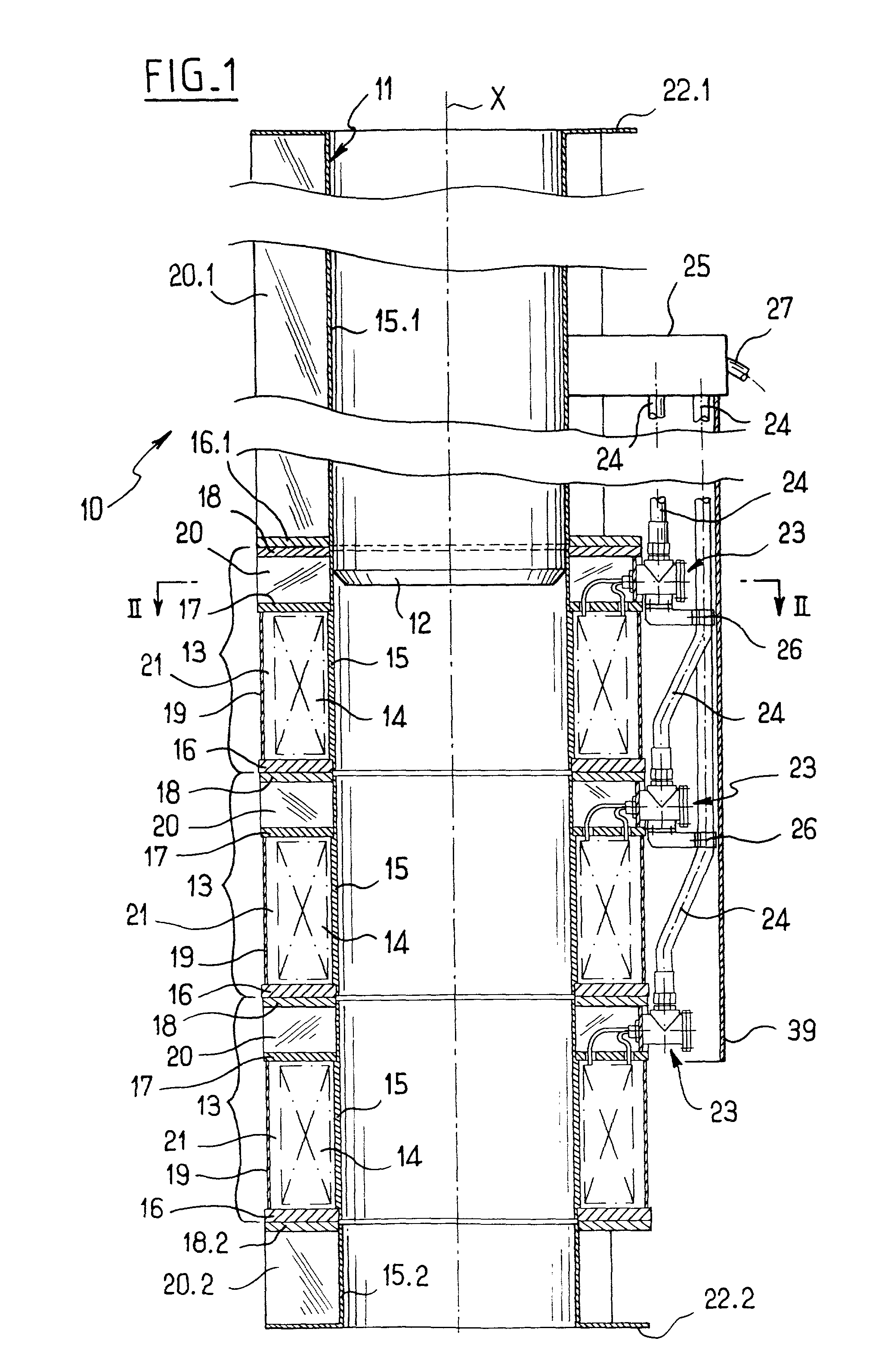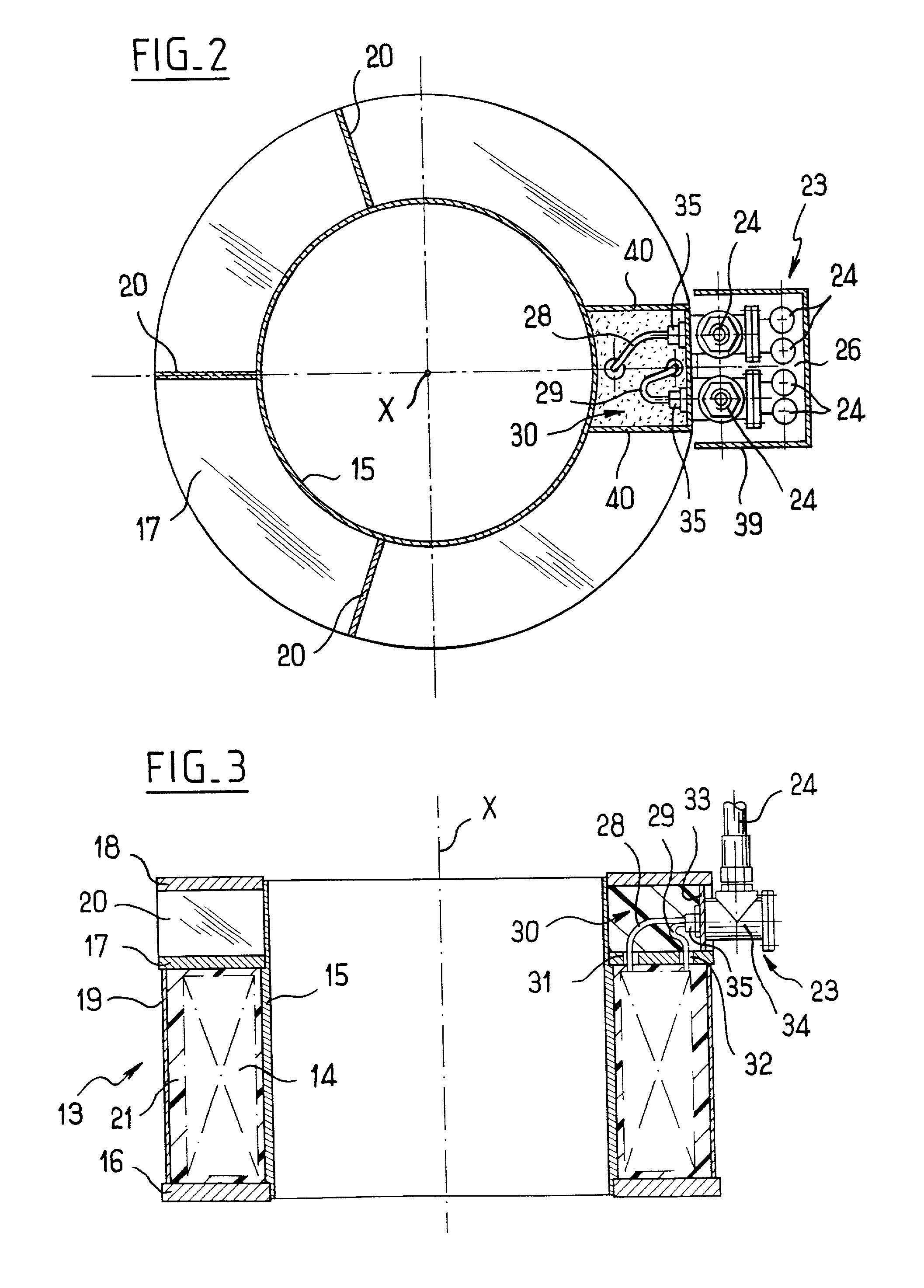Electromagnetic hammer having a moving ferromagnetic mass
a technology of ferromagnetic mass and hammer, which is applied in the direction of drilling machines, percussive tools, bulkheads/piles, etc., can solve the problems of coil damage, lack of rigid support for coils, and compacted coils, so as to reduce the cost and time required, bypass a damaged coil very quickly, and reduce the voltage and hammering rate
- Summary
- Abstract
- Description
- Claims
- Application Information
AI Technical Summary
Benefits of technology
Problems solved by technology
Method used
Image
Examples
Embodiment Construction
[0026] FIG. 1 shows an electromagnetic hammer 10 of the invention, the hammer being of the type comprising a tube 11 of non-magnetic material for standing on an element engaged in the ground (not shown), said tube being surrounded by a peripheral coil connected to electrical power supply means (not shown here), and slidably receiving a moving ferromagnetic mass referenced 12. The axis of the electromagnetic hammer 10 coincides with the central axis of the tube 11 and is referenced X.
[0027] According to an essential characteristic of the invention, the peripheral coil is subdivided into a plurality (in this case three) independent coils referenced 14, each coil 14 being received in an associated casing 13 and being wound around a cylindrical inside wall 15 of said casing, and the cylindrical walls 15 of the casings 13 are superposed so as to make up the tube in which the moving mass 11 slides.
[0028] Thus, contrary to the single one-piece tube described for the electromagnetic hammer ...
PUM
| Property | Measurement | Unit |
|---|---|---|
| length | aaaaa | aaaaa |
| axial forces | aaaaa | aaaaa |
| mass | aaaaa | aaaaa |
Abstract
Description
Claims
Application Information
 Login to View More
Login to View More - R&D
- Intellectual Property
- Life Sciences
- Materials
- Tech Scout
- Unparalleled Data Quality
- Higher Quality Content
- 60% Fewer Hallucinations
Browse by: Latest US Patents, China's latest patents, Technical Efficacy Thesaurus, Application Domain, Technology Topic, Popular Technical Reports.
© 2025 PatSnap. All rights reserved.Legal|Privacy policy|Modern Slavery Act Transparency Statement|Sitemap|About US| Contact US: help@patsnap.com



